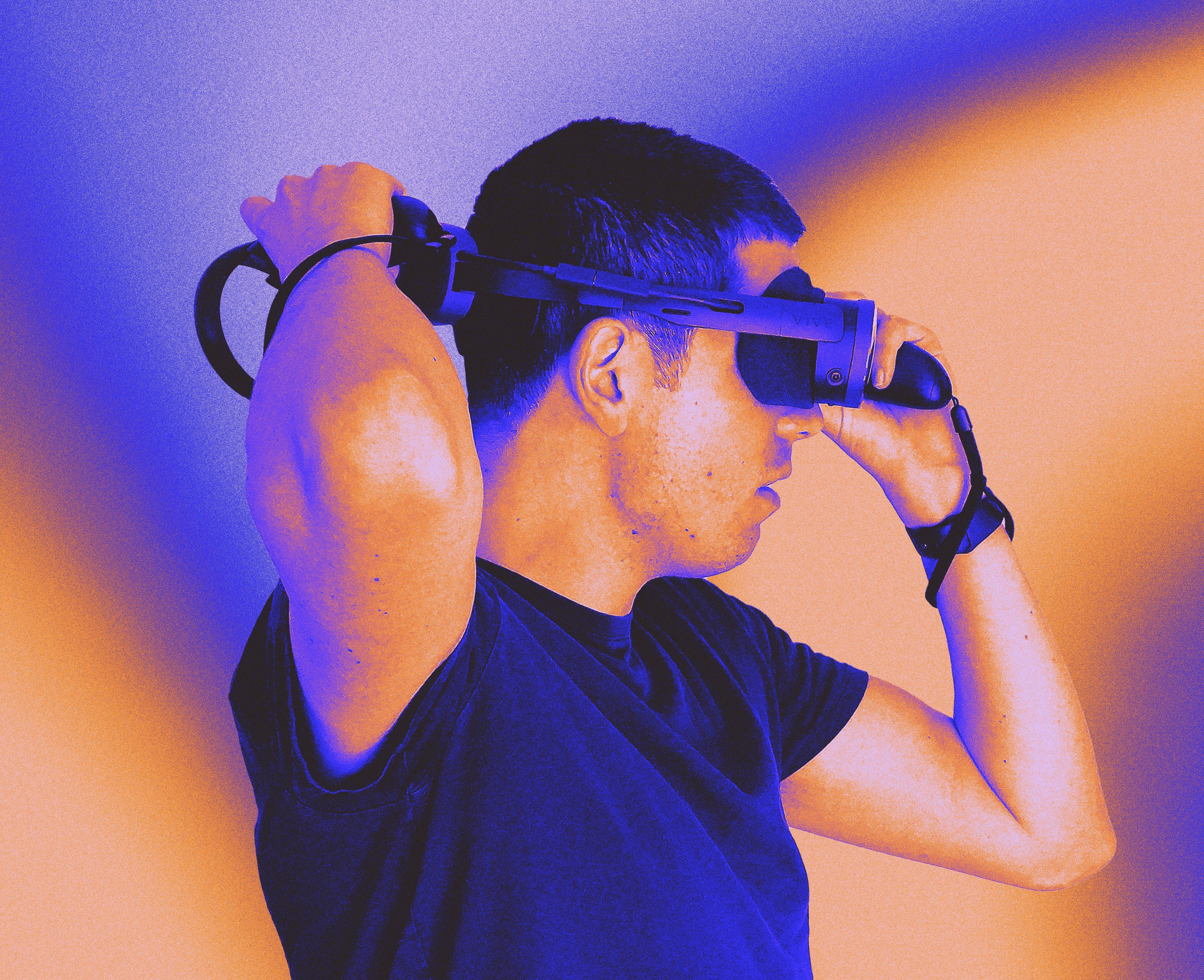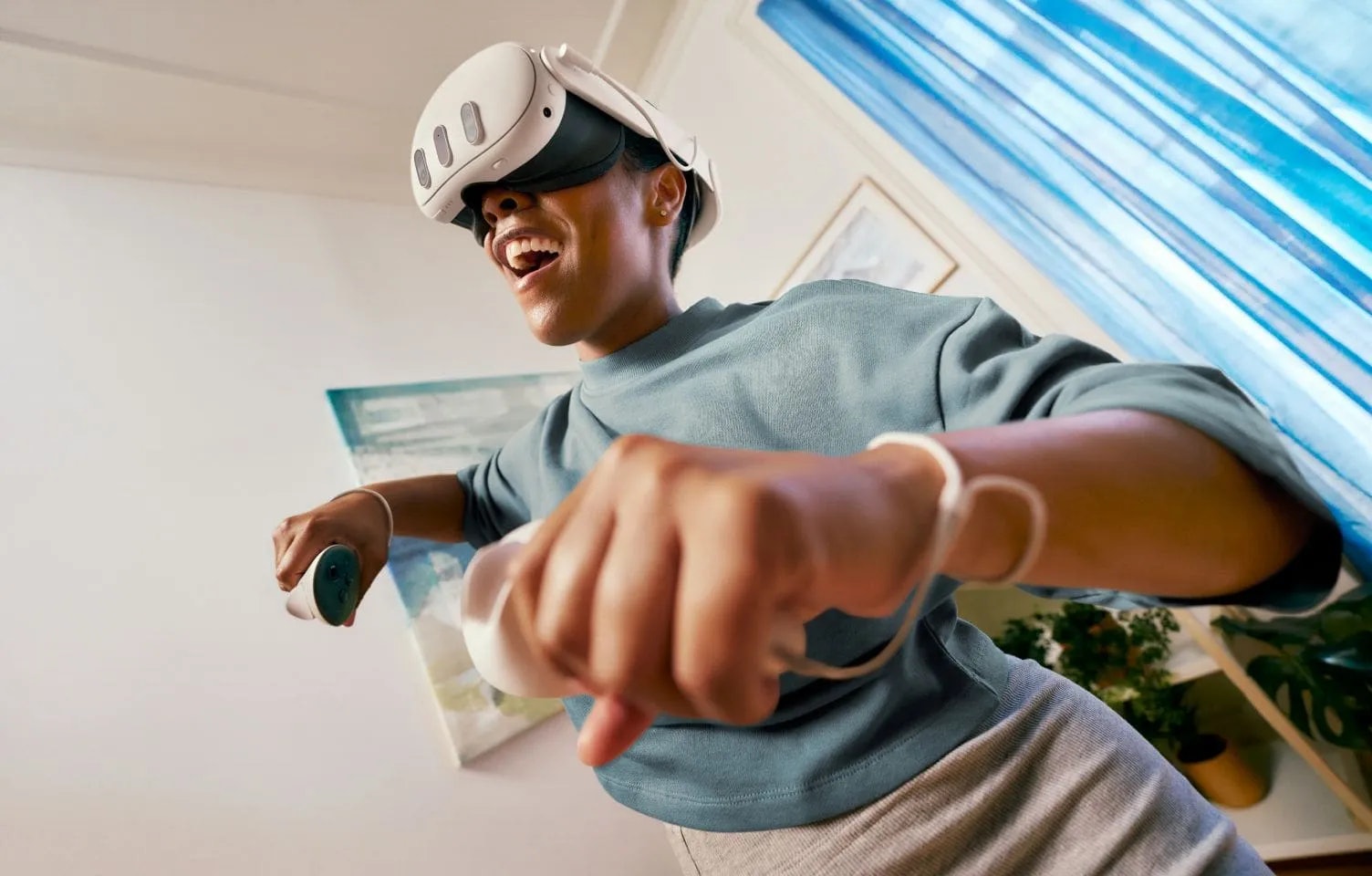
VR and mixed reality headsets like Meta’s Quest 3 are designed for a sweet spot that most people will enjoy. But because every person’s face is different, the only way to bridge the gap between comfort and functionality is with accessories like face cushions, straps, and even lenses.
This push and pull between how a VR headset works out of the box versus how it feels after several accessory purchases is par for the course for this kind of tech. But all the extra spending needed to achieve the perfect fit doesn’t really get factored into the price of framing virtual, mixed, and augmented reality devices as the future of computing. And some of the most promising glimpses of that future seem to be abandoning the idea of a one-size-fits-all headset for something even more custom.
Expanded Capabilities

Besides making screens more of a natural fit on our faces, accessories have gone a long way toward expanding the functionality of VR hardware. Some of that has to do with the current mainstream focus on standalone devices. When the consumer version of the Oculus Rift first made its splash in 2016, PC VR seemed like the path forward, and games and apps were designed around creating room-scale experiences and bringing objects into virtual environments. Since the debut of the original Quest headset in 2019, interest from Meta and casual users has gone in the exact opposite direction, towards apps and games that can run on mobile processors and experiences that use a headset’s built-in sensors for tracking.
Something like HTC’s Vive Tracker Ultimate feels designed to expand the limited tracking abilities of a standalone headset. They’re wireless sensors with cameras that you can strap to your limbs or just about anything to have it fully tracked in a VR game or app. Trackers like these are the kind of thing that makes teaching dance or ASL in VR possible in the first place.
On a simpler level, Meta’s Quest 3 Elite Strap with Battery achieves the same thing by making the headset more comfortable to wear with its rebalanced weight and extended battery life. It’s such a fundamental accessory for users (and pretty pricey in its own right) that Meta even dealt with a mini-crisis when its first batch of straps refused to charge the Quest 3. Battery life is one of the biggest pain points of a headset that an accessory can fix.
Even something as basic as a charging dock can make using a standalone VR headset less of a hassle. You don’t need to worry about battery life on PC VR headsets because they need to be plugged into a computer. A standalone headset like the Quest 3 is only guaranteed to be fully charged and ready to use if you’re keeping it on a charging dock. Meta included one at no additional cost with the Quest Pro, but it costs extra for the latest headset.
Given how much they help, it’s unfortunate that these accessories are so pricey, especially if you’re buying a first-party add-on from Meta. If you were to buy the company’s Quest 3 Carrying Case ($69.99), Charging Dock ($129.99), and Elite Strap with Battery ($129.99), you’d be adding an additional $330 to your purchase, more than half of the already $500 Quest 3. Not exactly cheap.
A Custom Approach
The alternative, which could very well become the norm, is getting a custom headset — a device that keeps accessories to a minimum by using components designed or fit specifically for your face and eyes. The Bigscreen Beyond, one of the smallest PC VR headsets on the market, achieves this by making its foam face cushion custom to each user. Using a custom app and an iPhone with Face ID, Bigscreen creates a 3D-printed cushion that perfectly blocks out light while keeping the Beyond’s displays and lenses at the right distance from your eyes. It’s not the most practical setup if you plan on sharing your headset — anyone you share your Beyond with will need their own custom face cushion — but it does mean you won’t have to spend extra money on getting the best fit for your face.
Besides Apple’s launch hands-ons and the spatial video demos it has given to press, we have precious little information about how the Vision Pro will be explained or sold to customers. All we know is that Apple will go for a personalized approach. Bloomberg writes that Apple is training Apple Store employees on how to fit the Vision Pro for new owners and package the headset with the appropriate cushions, straps, and prescription Zeiss lenses before it releases early next year. Apple reportedly believes that this initial fitting experience is key to selling the Vision Pro’s wizardry to customers, and considering how finicky less-advanced mixed reality devices can be, that’s not particularly surprising.
Do you want to spend less upfront and tack on accessories over time, or do you want to spend more at the start and get something customized to you?
The question for potential virtual or mixed reality headset owners really becomes this: Do you want to spend less upfront and tack on accessories over time, or do you want to spend more at the start and get something customized to you? It increasingly seems like a custom headset might be the way to go if you want the simplest possible experience. But for the $3,500 Apple is asking for Vision Pro, I don’t think that makes sense for most people. What is clear is that figuring out where accessories and personalization fit in the overall VR and AR hardware equation is only going to become more pressing as more people try these devices, and it's looking like, for the time being, it won’t be cheap.







